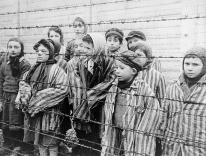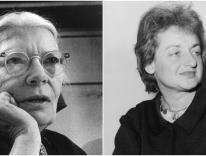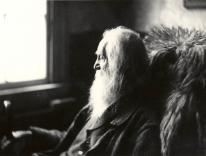This article was originally published in the September 28, 2001 issue of Commonweal magazine.
The World Trade Center was constructed during the Vietnam War. I remember watching it rise, the bare light bulbs of the construction crews swinging in the breeze at night. A steam fitter who worked there told me he would never be caught up there once the buildings were finished: the towers swayed too much in the wind.
Later, for a period, I worked as a messenger in Manhattan and would shoot up the towers in their huge pneumatic elevators, so large they seemed to carry a squadron of people at one time. In 1985, another Commonweal editor, Karen Sue Smith, and I interviewed Gov. Mario Cuomo in his office above the eightieth floor. The view from there was spectacular, the governor’s energy bristling and electric, and his sense of pride, particularly in the large reproduction of Holbein’s Thomas More on the wall, immense.
For eleven years (1986–97), Commonweal’s office on Dutch Street lay nestled beneath the shadow of the WTC. We could see the two towers through the conference-room skylight, installed by editor Peter Steinfels. After the first attempt to destroy the WTC in 1993, our publisher, Edward Skillin, commuting through the WTC from New Jersey, had to devise a new route, swinging north and then arcing south on a subway. He was eighty-nine at the time. For the past five years, I have tunneled beneath the WTC on my way to Commonweal’s new 120th Street office.
For twenty-four years, I have begun my morning commute to Manhattan aboard the Staten Island Ferry. I have taken the measure of each new dawn by seeing how it stacked up against the two towers. Some days they would be shrouded in clouds; others, bathed in the brilliant orange sun rising out of Brooklyn. Sometimes they ascended out of the harbor’s low creeping fog, as if the fog itself were breathless at their height and unable to keep up with them. Now they are gone, dust to dust.
It has been an effort to begin to make sense of it all. The nation’s defense shield clearly proved porous and tardy, a poor recommendation for faith in a missile defense shield. Apparently, all the antiterrorist experts are able to agree on is a need for more money. Some of the news coverage has been superb, and the photographs searing. Nevertheless, they were reportorial in nature, and even the close-ups seemed “at a distance,” unable to make up for seeing with one’s own eyes just how things stood. The mayor and the governor, who became towers before our eyes, concentrated on action, response, and inspiration—rather than explanation.
We at Commonweal watched the evolving horror on our computer screens. In this new small world, we got the news about our city from the BBC. We waited in fear and frustration, hoping to hear from spouses, children, and fellow staff members who might have been in the area—all accounted for finally, thank God. Then came the necessary thoughts of the morrow, of the rest of one’s life, and finally, of how to get home. For me, that proved a three-hour journey by subway, bus, and on foot, through some parts of the city that were to me a foreign landscape. At one point, I found myself walking down a long stretch of Atlantic Avenue in the Muslim quarter of Brooklyn. The smell of smoke from the twin towers hung in the air, and the streets were almost deserted—except for a large contingent of police, summoned by the far-sighted mayor’s order to protect the Muslim residents. Finally, on a somber, packed bus, we inched over the Verrazano Bridge to Staten Island. It was from there I saw with my own eyes the smoldering remains of what that morning had been the WTC, now a black hole punctured in the tip of Manhattan. A massive gray column of smoke rose from the area, as if from a Homeric funeral pyre, a Vesuvius on the Hudson.
My son Justin, twenty-four, works at Seventeenth Street and Broadway. That night he said that when the second tower collapsed, his sense of hope disappeared with it. What kind of people would do such a thing? he asked. He had always known the city of his birth as the New York of the twin towers. His world, his mental geography, will henceforth be demarcated at 9/11/01, as will all of ours. We and our nation must rebuild hope and meaning.
When I finally got home, my ninety-three-year-old mother asked in bewilderment and agitation why that Palestinian woman on the television had been dancing for joy? I had no convincing answer. But days later, at Mass on the feast of Our Lady of Sorrows, I finally remembered one of Jesus’ startling warnings: do not fear those who can kill the body but only those who can kill the soul. Whatever our response to September 11, let it be just and worthy, ethically ordered, and tempered by the knowledge of our own sins. In the end, may we prove worthy of our humanity, of God’s gift of our very soul.
Please email comments to [email protected] and join the conversation on our Facebook page.
Previous Story
More Than an Idea
Next Story
The Innocents


